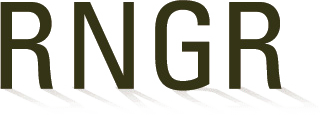
Acer (negundo)
|
John M. Englert USDA NRCS - Norman A. Berg National Plant Materials Center Bldg. 509, BARC - East, E. Beaver Dam Road Beltsville, Maryland 20705 (301) 504-8175 (301) 504-8741 (fax) john.englert@wdc.usda.gov http://plant-materials.nrcs.usda.gov/mdpmc/ |
|
| Family Scientific Name: | Aceraceae | ||
|---|---|---|---|
| Family Common Name: | Maple Family | ||
| Scientific Name: | Acer negundo | ||
| Common Name: | box elder | ||
| Species Code: | ACENEG | ||
| Ecotype: | Cumberland Gap National Historical Park | ||
| General Distribution: | Chiefly western U.S. but found in east also, Vermont to Florida. Found in moist alluvial soil, along streams. | ||
| Propagation Goal: | plants | ||
| Propagation Method: | seed | ||
| ProductType: | Bareroot (field grown) | ||
| Time To Grow: | 0 | ||
| Target Specifications: | Stock Type: Bare root seedling. Height: 6" - 4'. Root System: Information not currently available. | ||
| Propagule Collection: | Seed has been collected at Cumberland Gap National Historical Park, Sugar Run, from late September to late October. | ||
| Propagule Processing: |
Seed Processing: Information not currently available. Seed Storage: Seeds are stored dry in plastic or paper bags in a cooler at 40F, 35% relative humidity.Seeds/Kg: 23,000 to 25,200. Germination: Approximately 7-16% of seeds planted survive to harvest, depending on year. Purity: 100%. |
||
| Pre-Planting Treatments: | Seed has embryo dormancy and low pericarp premeability (USDA, 1974)Seed Treatments: Seed is imbibed in water overnight. Seeds are dusted with fungicide prior to planting outdoors in the fall where they undergo natural stratification. | ||
| Growing Area Preparation/ Annual Practices for Perennial Crops: |
Propagation Environment: Outdoor nursery beds. Seed Propagation Method: Hand-sowing seed in rows. |
||
| Establishment Phase: |
Sowing Date: December. Seedlings emerge the following spring after fall sowing. Sowing/Planting Technique: Seeds are dusted with fungicide and hand sown into rows. Endo-mycorrhizae are sprinkled over the seed before covering with 1/4 - 1/2 inch of soil. The beds are then mulched with aged sawdust. Screening against rodents may be necessary. Sawdust mulch is scraped back in spring prior to seedling emergence. Newly emerged seedlings are monitored closely for irrigation needs. |
||
| Active Growth Phase: | Rapid Growth Phase:Because National Plant Materials Center soil is a nutrient poor sandy loam, seedlings are fertilized from mid-April with a granular 10-10-10 once a week through early June. From mid-June through late July, the 10-10-10 is alternated with a granular urea every other week. From late July through late August the seedlings are fertilized with 10-10-10 every two weeks. Overhead irrigation is used after every fertilization. The rate of water applied is determined by soil moisture prior to irrigation. | ||
| Hardening Phase: | Hardening Phase: During mid- to late summer, fertilization is cut back to twice monthly. Beginning in September, irrigation is only used in a severe droughty situation. | ||
| Harvesting, Storage and Shipping: |
Total Time to Harvest: Two years from sowing in the woody beds to harvest as bare root seedlings. Harvest Date: Dormant bareroot plants are harvested in early to mid-December. Storage Conditions: Bareroot plants are bundled into groups of 25 (or whatever is manageable), and long roots are trimmed. Bundles are placed into plastic bins with drainage holes. The roots are covered with sawdust and the bins are placed into cold storage (40§F) and watered as needed during the winter. Dormant, gallon-sized container plants are stored outside under microfoam after leaf fall. Clean, well-containers are overlapped on their sides on weed barrier fabric, and covered with a microfoam insulating blanket. Rodenticide baits are placed at intervals under the blanket before it is secured with rope and rebar. |
||
| Length of Storage: | <b>Storage Duration:</b> December to mid-March. | ||
| References: |
Brownand Brown. 1992. Woody Plants of Maryland. Port City Press, Inc. Gleason, H and A. Cronquist. 1991. Manual of Vascular Plants of Northeastern United States and Adjacent Canada. 2nd edition. New York Botanical Garden. USDA, Forest Service. 1974. Seeds of Woody Plants in the United States. USDA, Ag. Handbook 450. USDA NRCS National Plant Materials Center. Woody bed and container plant records. Unpublished data. |
||
Citation:
Davis, Kathy M.; Kujawski, Jennifer. 2002. Propagation protocol for production of Bareroot (field grown) Acer negundo plants USDA NRCS - Norman A. Berg National Plant Materials Center Beltsville, Maryland. In: Native Plant Network. URL: https://NativePlantNetwork.org (accessed 2025/10/24). US Department of Agriculture, Forest Service, National Center for Reforestation, Nurseries, and Genetic Resources.



